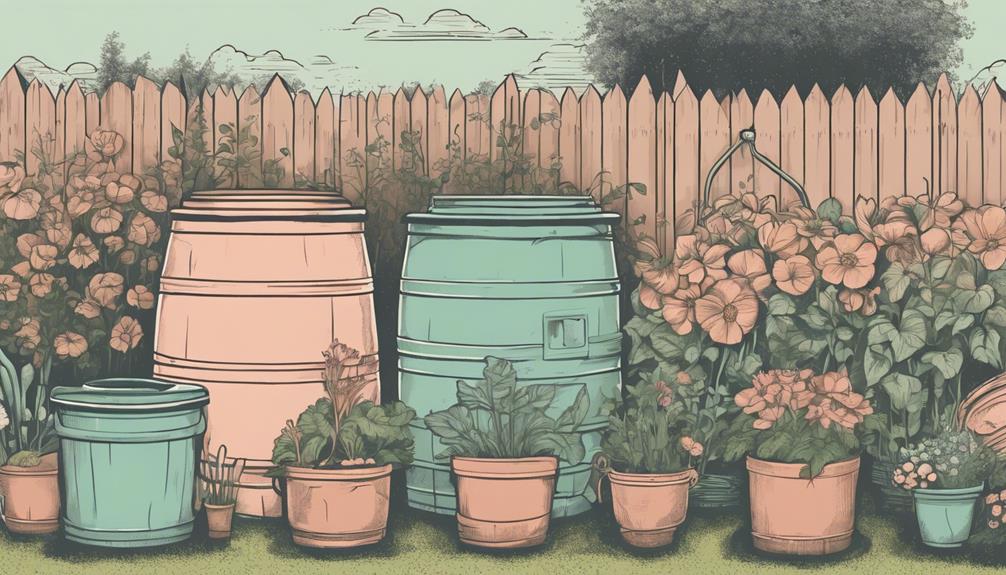See All: Backyard Farming
Free Backyard Farming Webinar…
You can grow food! This free webinar is for people who want the fastest and easiest ways to produce healthy and delicious vegetables, eggs, and meat. Because you know that growing your own food is like printing your own money…
Click Here To Watch The Free Webinar Now!
“I’ve recently set up some rain barrels to collect rainwater, but I’m struggling to figure out how to connect them to my garden irrigation system. I want to make sure I’m doing it right so I can use the collected water efficiently for my veggie patch and flower beds. Could you explain how to set up a system that connects my rain barrels to my existing irrigation setup? Thanks for your help!” – Patricia, Seattle, USA.
How Do I Connect Rain Barrels To Irrigation?
Connecting rain barrels to your irrigation system can be a fantastic way to utilize collected rainwater efficiently, ensuring your garden thrives while also conserving tap water. Here is a detailed, step-by-step guide to help make this process smooth and successful.
Why Use Rain Barrels for Irrigation?
Using rain barrels offers several benefits:
- Environmentally Friendly: Reduces water runoff, which can carry pollutants into waterways.
- Cost-Effective: Lowers water bills by relying on free rainwater.
- Gardening Benefits: Rainwater is free from chemicals found in tap water, which can be better for plants.
Assessing Your Garden’s Water Needs
Before connecting rain barrels to your irrigation system, consider your garden’s water requirements. Noticing which areas need more moisture can help in planning the irrigation setup.
- Identify Zones: Divide your garden into zones based on plant types and water needs.
- Estimate Water Usage: Calculate how much water each zone requires.
Setting Up Your Rain Barrels
Proper installation of rain barrels is key. Follow these steps:
Selecting the Right Locations
Place rain barrels under downspouts where they can easily collect runoff from your roof. Make sure they are on sturdy, level surfaces.
For Patricia in Seattle, with its frequent rain, positioning barrels strategically can greatly enhance water collection.
Connecting Multiple Barrels
If one barrel isn’t enough, connect multiple barrels using linking kits or hoses to expand storage capacity:
- Overflow Valves: Use overflow valves that link barrels so excess water from the first flows into the next.
Connecting Rain Barrels to Your Irrigation System
Components Needed
Gather the following items to connect your rain barrels to your irrigation system:
- Downspout Diverter: Redirects water from the downspout into the barrel.
- Spigot or Faucet: Allows water to flow out of the barrel.
- Hose: Connects the barrel to the irrigation system.
- Filter or Screen: Keeps debris out of the system.
- Irrigation Tubing: Distributes water to the garden zones.
Step-by-Step Connection Process
- Attach Downspout Diverter: Install the diverter on the downspout. Cut the downspout to fit the diverter, ensuring it’s securely attached to channel water into the barrel.
- Install Spigot: Drill a hole near the bottom of the rain barrel and attach a spigot. This will control the water flow out of the barrel.
- Set Up Overflow System: Ensure there’s an overflow outlet to prevent spillage when the barrel is full. Connect this to additional barrels or a safe drainage area.
- Connect Hose to Spigot: Attach a garden hose to the spigot. Ensure it’s tightly connected to avoid leaks.
- Integrate Filter: Place a filter or screen in the spigot or attach it to the hose to capture any debris that might clog the irrigation system.
- Lay Irrigation Tubing: Extend irrigation tubing from the hose to the garden zones. Use stakes or clips to secure it in place.
- Test the System: Open the spigot to test the water flow and adjust as needed to ensure even distribution across garden zones.
Automating Your Rainwater Irrigation System
For convenience, consider automating your system:
Using Timers and Controllers
Install timers or smart controllers to regulate water flow based on a schedule or soil moisture levels:
- Mechanical Timers: Set specific times for irrigation.
- Smart Controllers: Adjust water flow based on weather forecasts and soil moisture sensors.
Maintenance Tips for Your Rainwater Irrigation System
Regular maintenance ensures efficiency and longevity:
Cleaning Barrels and Filters
Periodically clean the inside of rain barrels and replace or clean filters to prevent clogs:
- Seasonal Cleaning: Empty and scrub barrels at least once per season.
- Filter Checks: Inspect and clean filters monthly to maintain water flow.
Inspecting Connections
Regularly check all connections for leaks or damage. Tighten or replace any faulty components as needed.
Final Thoughts…
Patricia, the process of connecting rain barrels to your irrigation system might seem complex, but breaking it down into manageable steps can make it much more approachable. Remember, every garden is unique, so tailor the setup to match your specific needs. The benefits of using rainwater extend beyond cost savings, contributing significantly to environmentally friendly practices. Happy gardening, and thank you for raising such an important question!
Return To: Backyard Farming
Free Backyard Farming Webinar…
Marjory Wildcraft: For 20+ years, Marjory has been a leader in survival & preparedness and wants to show you how to grow food in your backyard farm. This free webinar is for people who want the fastest and easiest ways to produce healthy and delicious vegetables, eggs, and meat. Because you know that growing your own food is like printing your own money…

